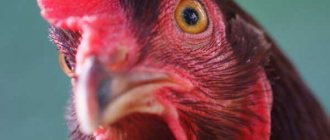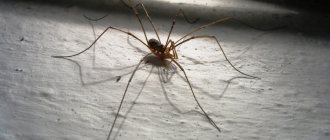All beekeepers in their practice are faced with the phenomenon of swarming bees. This is the natural process of insect reproduction. Managing it is quite problematic. However, observation and the right machinations allow you to get as much benefit as possible from swarming.
If you manage to correct the situation in time, you can prevent the formation of weak families. Consequently, by the time the honey is collected, the apiary will become larger and entire families will remain there.
If you are not yet familiar with this process, you can find many videos of bees swarming on the Internet. So let's try to figure it out.
Secrets of the bees
The reasons for bee swarming are not fully understood even today. In some seasons this process occurs rapidly, and in another year it may not be observed at all.
For a century and a half, professional beekeepers and zoologists have been trying to figure out the secret of a bee family that, for some reason, suddenly split into two parts, one of which remains in the hive, and the other goes in search of a new home. And people are driven not by simple curiosity, but by the desire to understand how to stop bees from swarming.
But all these attempts lead to nothing. The bees continued to swarm, and do so to this day, despite all the tricks of the beekeepers. Experts see this as a manifestation of the deep nature of all living things, the desire to develop new areas.
Why catch a swarm
If the catch is successful, the swarm will help expand the apiary and bring good profit: swarms are famous for their rapid increase in numbers. In addition, such a “hunt” is quite interesting and exciting.
Particularly valuable are wandering swarms of wild insects. They are characterized by excellent performance, increased resistance to various diseases and adverse weather conditions. As a result, it is possible to form many bee families that differ in genotype.
In modern beekeeping, the ancient method of catching bees has been almost forgotten. Now beekeepers are trying to prevent swarming, as it often leads to the loss of a bee colony.
Catching a swarm will benefit not only the beekeeper, but also the bees. Many insects, having left the apiary, die because they do not find a home or do not have time to stock up on honey for the winter. In such cases, catching the swarm saves the bees' lives.
The best option is to catch swarms with traps, but other methods are also known. Now let's take a closer look at how to catch a swarm of bees.
Process mechanics
Swarming is a certain state of a bee colony when some of the bees are about to leave the hive. The offspring shows determination to establish a new colony and live independently. In this case, up to two-thirds of the bees who previously lived in the same hive as a friendly family can leave the apiary.
Of course, it is in the interests of the beekeeper to completely control the process so as not to lose his hardworking workers who are going to seek happiness on the side.
You need to pay every attention to the following points:
- Laying queen cells;
- The appearance of many drones and young bees that do not participate in the main “production activity”. These bees will become the basis of the layering, and before the swarm departs, they hang in clusters on the honeycombs, accumulating strength and reserves of nutrients;
- The amount of honey collected has noticeably decreased, combs are being built less actively, and brood is being hatched. This means that the bees have already begun to scout out possible locations for a new nest;
- The presence of queen cells, signaling the family’s desire for separation.
Additional factors that stimulate the swarming process include increased air temperature, a cramped, poorly ventilated hive, an old queen, and a lack of good honey plants nearby.
What it is
The process of swarming bees in hives is a state in which a certain number of them try to separate from the entire brood. The result is a new young layer, ready to function independently. It is this readiness to swarm that is the reason that some working individuals fly away from the apiary from the hive, leaving the rest without a queen. But they will have to breed a new queen for themselves and gradually increase their strength.
On the one hand, swarming is a positive phenomenon of family division, which allows you to increase the number in the apiary. But, if the beekeeper misses the moment and cannot catch the separated ones in time, then he will simply lose them, as they will fly away.
Therefore, it is important for the beekeeper to know the following points:
- When is it time for a swarm to swarm?
- Be able to work with swarms.
- Carry out prevention in the apiary against swarming of bees, that is, carry out anti-swarm measures in the apiary.
- Be able to catch new separated bees.
- Identify the uterus.
- Know ways to encourage your winged pets to swarm in a controlled manner when new layers are needed.
How does this happen
When the sun begins to get hot in late spring or early summer, it is time for bees to swarm. Insects stop producing honey and collecting pollen. They begin producing cells to produce new queens. When the eggs are laid, these cells are sealed. After about 9 days, if there is no rain, the swarm emerges.
- When the decision is made, the swarming bees stock up on honey from the hive's reserves, after which, after 3-5 minutes, from 45 to 70% of the old family sets off.
- Groups of swarming bees sit on the branches of nearby trees, waiting for the queen to emerge, which is usually delayed.
- When this finally happens, the bees in the group that the queen has joined spread the scent of their glands into the air, calling other bees to join them.
The swarm gathered in a “beard” does not immediately fly away, but remains somewhere close to the hive for several hours, hanging on a bush or tree. After swarming, bees wait for information from scouts exploring the surrounding area.
Scout bees, having found a good location for their future home, dance surrounded by numerous observers, conveying a message. The dance is repeated many times by many scouts, and this happens until most of them indicate the same direction and distance to the desired place.
The journey can take three days, and the new nest is sometimes located more than 5 km from the hive. If the path is long, the swarm may sit down several times to rest on walls, branches and fences, as can be seen in the photo of bees swarming.
An interesting detail: swarming bees, having reached the future nesting point, immediately forget the way to the hive from which they recently flew out.
General tips for catching bees
To properly catch a swarm, you need to remember a few secrets:
- To place the trap, it is necessary to select quiet areas, away from noisy roads, farms and animal habitats.
- In the forest, you should choose trees growing near the edges, near clearings, on the banks of lakes or streams.
- Traps should be installed so that they are invisible to random passers-by.
- When installing trap boxes, you should take into account the flight routes of bees to the honey collection.
- It is advisable to place traps not far from the apiary (but not on it) or near the habitat of wild bees. Also a good option are flowering gardens or fields with honey plants. There should be a pond nearby (at a distance of 100-200 meters).
- It is recommended to make the walls of the trap light to avoid overheating.
- Some manuals indicate that the entrance should be directed south. In reality, the direction of the tap hole does not really matter.
- It is better to place a swarm trap in advance, since the scouts begin searching for the swarming site half a month before leaving the hive.
- To find out that a swarm has settled in a trap, you need to constantly listen to it.
- If a swarm has flown into a trap, then after sunset you need to cover the entrance and then carefully transfer the insects to the apiary.
- The released trap can be installed back, having previously smeared its front part and the entrance with a decoction of herbs or wax.
- To ensure that insects do not suffer from heat during transportation, it is necessary to ensure the supply of air to them. To do this, lift the lid, tie it and the upper part of the body with gauze. Then, loosening the gauze, the lid is pulled out.
When catching bees, you should mainly rely on luck, since it is impossible to predict the result. You can spend a lot of time and not catch a single swarm. But if luck smiles on you, you will be able to form an apiary without significant costs.
Waves of swarming
The process may not stop with the departure of the first swarm. 9 days after the separation of the family, sometimes another swarm is formed - “secondary”, and a couple of days after the “secondary”, another “tertyak” can emerge from the hive.
The process can be so protracted that the “Tretiak” will be followed by the fourth and fifth swarms - the so-called “poroykas”.
Signs
So that the beekeeper can get his bearings in advance, here are the signs that occur during swarming that people pay attention to:
- Departures for bribes are becoming more rare.
- In the evening there is a flight, but at a short distance. This indicates that the surrounding areas are being examined for the possibility of arranging a new nest.
- On frames or walls, honey workers begin to gather in fairly large groups. At this time they behave restlessly and make intense noise.
- It is also important to take a closer look at the behavior of workers from such a family - they begin to clean off the propolis stuck to the surface from the taphole and hole. They do this so that the queen can go outside unhindered.
- The sounds that the young queen makes appear. She echoes her competitors, who are still sitting in sealed cellular cells. This is also a sign of swarming.
Ways to fight
There are no recipes for how to absolutely reliably prevent bees from swarming. You can only take control of the swarm energy. As they say, if a process cannot be suppressed, it must be led.
For example, early strong swarms can be offered a free hive for housing. Having acquired a cozy, furnished home, the swarm will immediately switch to building honeycombs, raising replacements, and collecting pollen and honey. Before the main bribe begins, such a family will already have time to develop into a powerful productive organism.
Among the levers of influence, experienced beekeepers most often use:
- Keeping families in horizontal spacious hives, with a gradual increase in the available space. This allows the bees to be occupied with the fruitful activity of building honeycombs and breeding offspring, so that they no longer have time for “stupidity”.
- Moving from one place to another. A change of location probably discourages bees from looking for something new themselves.
- Artificial swarming of bees. Having identified a suspicious hive, the beekeeper shakes the bees from the frames onto a table installed in front of the entrance. The swarming bees remain hanging in clusters under the table, while other bees that did not plan to swarm return to their home.
- If the beekeeper is tormented by fussing with swarming bees, you can simply abandon this breed, choosing calmer bees that are not prone to “escape.”
How to catch a swarm using a beehive
You don't have to make a trap. You can also use a beehive, which will greatly simplify the work and will not take much time. How to catch a swarm of bees in an empty hive?
You should take a simple hive, consisting of one body, and place 6 frames in it: this number is considered optimal. If there are a lot of frames, then only a small family will be able to live in the hive, and if there are few, then the insects will most likely fly by. It is also advisable to give the walls of the house, like the traps, a scent attractive to bees.
Wild bees are more attracted to old structures. Domestic insects can also settle on new frames. The hive should be checked regularly. But you shouldn't move it to another place. It is possible that the scouts had previously noticed the hive, and due to its rearrangement, the family will not be able to move into it.
If the swarm escaped
When prevention did not help, and the swarm still managed to get out of the hive and hang somewhere on a tree or bush, you need to catch the fugitives by placing them in a swarm, which is temporarily left near this place so that the rest of the bees join their friends.
It is necessary to offer the swarm a new furnished home in the form of a beehive, in which there are frames with wax and dry food, honey and beebread. Frames with open brood will help keep the swarm in the new nest.
How to catch a swarm with a trap
A trap is an ordinary wooden box with frames placed inside. You can buy it or make it yourself. To install this structure correctly, you will have to stock up on rope, wire and a ladder.
First you need to carefully examine the tree and find a shady place on it, hidden from prying eyes. The trap is then pulled to the selected position with a rope and firmly secured with wire so that the structure can withstand strong winds. Then you need to walk around the tree, looking up to make sure that the trap is invisible from below.
How to find the right place
Where should traps be installed? There are several options.
In the forest
The most common place when catching a wild swarm is a tree growing in a forest or forest plantation. The box for catching the swarm is placed at a height of 5-7 meters so that predators cannot reach it. If it is not possible to raise the trap high enough, then you can place it at a height of 3-4 meters.
You need to choose a strong and tall tree (preferably well branched) so that it is noticeable and does not sway too much in the wind. The best choice would be pine or oak, especially if they grow near a clearing with honey plants or a clearing. If possible, it is advisable to hang the trap on a tall tree growing alone on the shore of a reservoir.
Near the field
If there are no forests nearby, then a field is suitable for catching a swarm, because this is where the bees fly for nectar. You should install the hive at the edge of the field or attach the trap to a tree growing nearby.
In the garden
It is not necessary to go to the forest or field for a swarm. You can try to catch bees in your garden during the flowering period of fruit trees. Flowers of plants serve as a source of delicacy for insects - nectar. Therefore, you can attach a trap to them or simply place a beehive with bait in the garden.
If there are no fruit plants in the garden, but there are linden trees, then the bees will also fly into the yard.
When to set traps
You need to know not only where to set bee traps, but also when to set them. This work should be done in May. It is in this month that swarming begins. It lasts until August.
Photo of bees swarming
Prevention
In fact, experienced beekeepers do everything they can to prevent this condition from occurring in honey bees. To achieve this, they carry out certain prevention methods:
- Provide sufficient free space for bees.
- They attract some of the freed workers to useful work.
- They are not given the opportunity to build new queen cells or hatch a new queen.
Reforming hive bodies
When a beekeeper sees that the space in the house is becoming too cramped, he should take a set of measures to expand the living space. This can be done in the following ways:
- Initially set the framework. They can be either empty or waxed.
- When they too become full, the problem can be solved by erecting a new building or the so-called second floor.
Uterus replacement
When the reason lies in the age of the queen, she is replaced with a new one. It is recommended to carry out such manipulation at least once every 2 years. The old one is destroyed, and the new one is either hatched from the egg, or they try to plant a young one.
Frame selection
You can solve the problem by taking frames with fertilized brood and placing them in houses where the colony is weak or small in number. This is done with every 3rd frame.
Two positive points are achieved here:
- Preventing bees from swarming.
- Strengthening weak layers.
Bait
After preparing the trap, the longer work begins - luring the bees. There are two options here - trust proven folk methods, or use special chemistry.
Among the drugs, there is about, “Sanroy”, “Uniroy”. Otherwise, the use of herbs and flowers is acceptable. Rub the frames with mint leaves.
No less attractive to bees are fennel, juniper, lilac, and rose. Sweet foods are strictly contraindicated - unless you want a swarm of wasps.
Recommendations
It is optimal to carry out this procedure in mid-spring, attaching the trap to a strong branch that does not sway. Check it occasionally - if there are other insects present, the bees will no longer settle there. Also, carefully examine the frames before sending them to the trap - the absence of pests, mold and other contamination is important.
If you have studied in advance how much a swarm of bees costs, you have already realized that catching them will be much more profitable. Especially in cases where all the necessary materials and tools are at hand.











